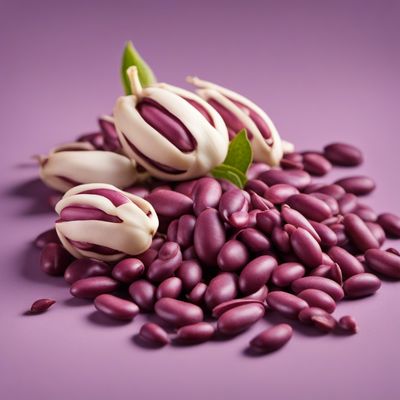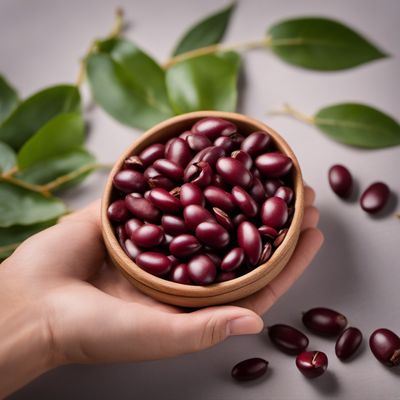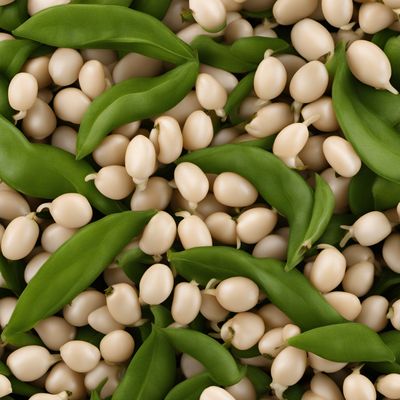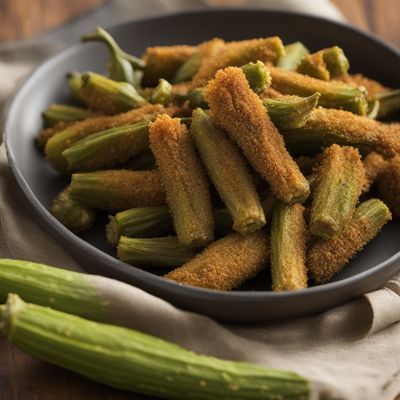
Ingredient
Stink beans (with pods)
The Pungent Delicacy: Stink Beans
Stink beans are long, flat beans with a greenish-brown color and a rough, bumpy texture. They have a pungent smell, similar to a combination of garlic and onions. When cooked, the beans soften and develop a slightly crunchy texture. The flavor is intense and earthy, with hints of bitterness and a lingering umami taste.
Origins and history
Stink beans have a long history in Southeast Asian cuisine, particularly in countries like Indonesia, Malaysia, and Thailand. They have been used for centuries and are deeply rooted in the culinary traditions of these regions. Stink beans are native to Southeast Asia and are believed to have originated in the Indonesian archipelago. They have been cultivated and consumed by various indigenous communities for generations.
Nutritional information
Stink beans are a good source of dietary fiber, protein, and various vitamins and minerals. They are low in calories and fat, making them a healthy addition to meals. Additionally, they contain antioxidants that help protect the body against oxidative stress.
Allergens
There are no known allergens associated with stink beans.
How to select
When selecting stink beans, look for fresh pods that are firm and vibrant in color. Avoid beans that are discolored, wilted, or have a strong, unpleasant odor. The pods should be free from any signs of mold or damage. If possible, choose younger beans as they tend to have a milder flavor and a more tender texture.
Storage recommendations
To store stink beans, place them in a perforated plastic bag or a container with ventilation to allow air circulation. Keep them in the refrigerator, where they can stay fresh for up to a week. Avoid washing the beans before storing, as moisture can accelerate spoilage.
How to produce
Stink beans can be grown in tropical and subtropical regions. They require warm temperatures and well-drained soil. The beans can be propagated from seeds, which should be soaked in water for a few hours before planting. Regular watering and fertilization are necessary for optimal growth. Harvest the beans when they are still young and tender for the best flavor.
Preparation tips
Stink beans are commonly used in stir-fries, curries, and salads in Southeast Asian cuisine. They pair well with ingredients like shrimp, garlic, chili, and coconut milk. The beans can also be pickled or fermented to enhance their flavor and preserve them for a longer period. Additionally, stink beans can be added to soups or used as a topping for rice dishes.
Availability
Indonesia, Malaysia, Thailand
More ingredients from this category » Browse all

African locust bean (with pods)
The African Umami

Lablab beans (with pods)
The Versatile and Nutritious Lablab Beans: A Pod of Health and Flavor

Azuki beans (with pods)
The Versatile Azuki: A Nutrient-Packed Legume with a Crunch

Mung beans (with pods)
The Versatile Green Gem

Mat bean (young pods)
The Green Gems of Legumes

Sword bean (young pods)
The Versatile Bean of the Tropics

Vetches (with pods)
The Versatile Vetches: Pods Packed with Potential

Black eyed peas (with pods)
The Versatile Delight: Exploring the World of Black Eyed Peas with Pods

Black gram (young pods)
The Green Delicacy: Black Gram Young Pods

Soyabeans (with pods)
The Mighty Legume: Exploring Soyabeans (with Pods)

Jack beans (with pods)
The Versatile Legume: Jack Beans with Pods

Yardlong beans (with pods)
The Versatile Veggie: Exploring Yardlong Beans
